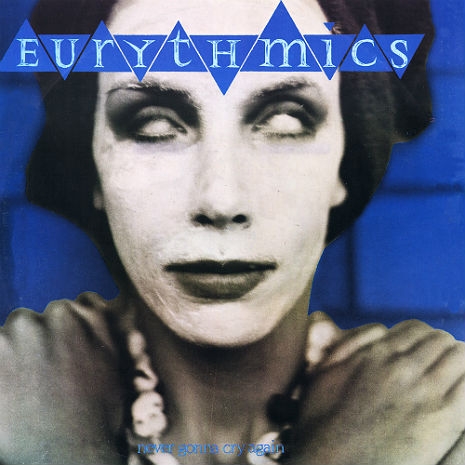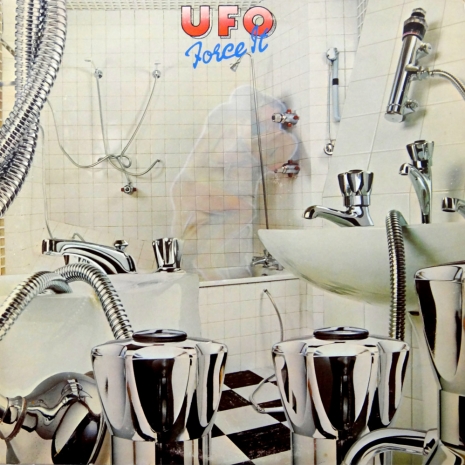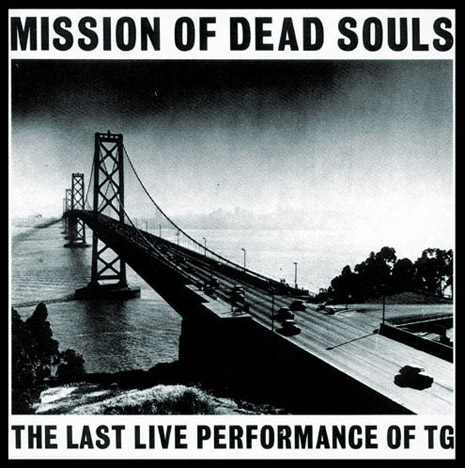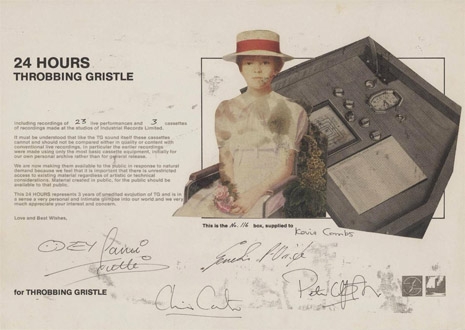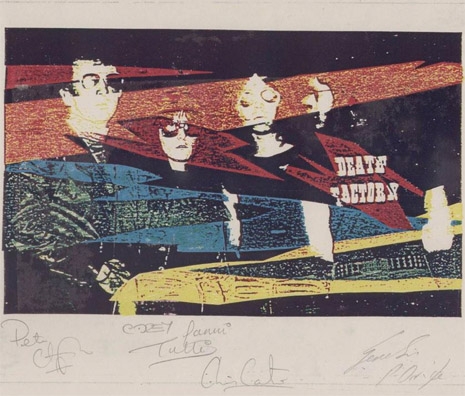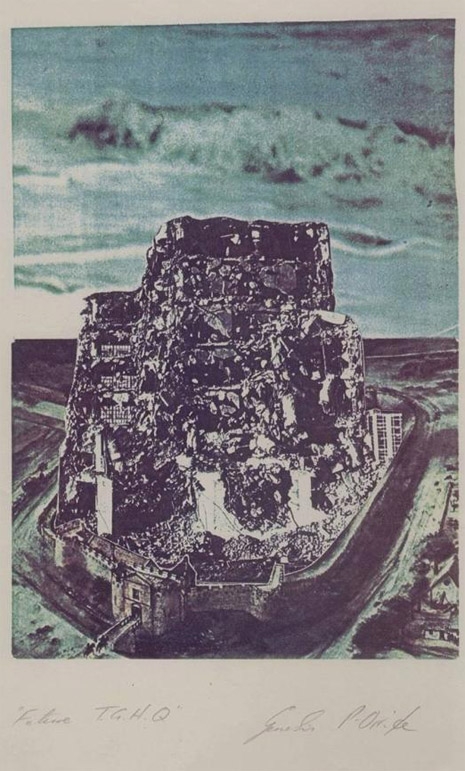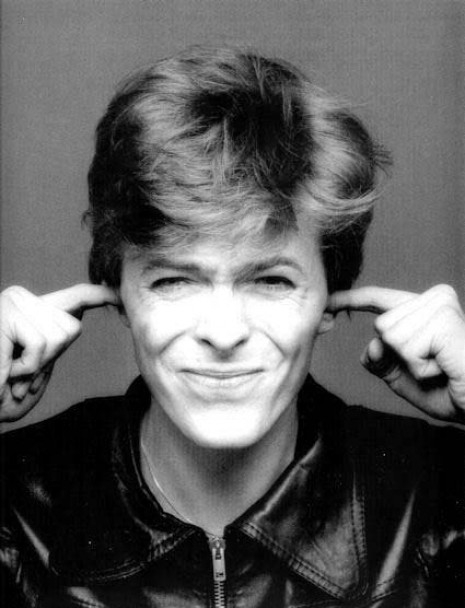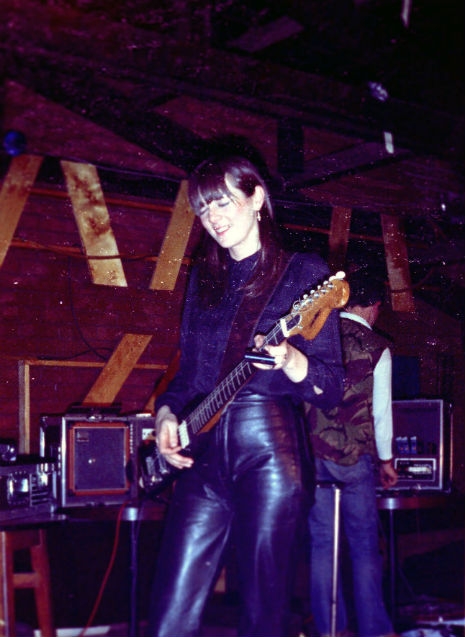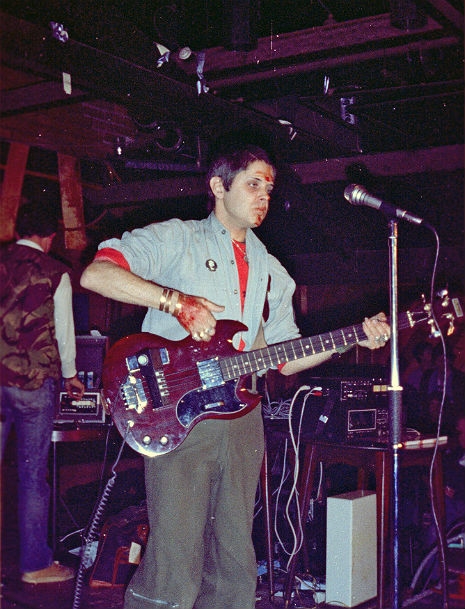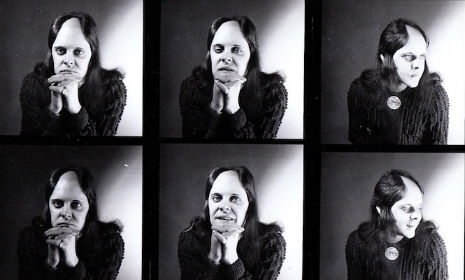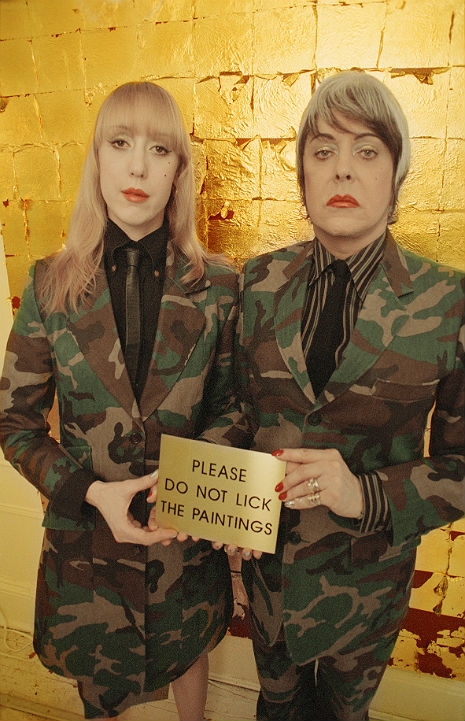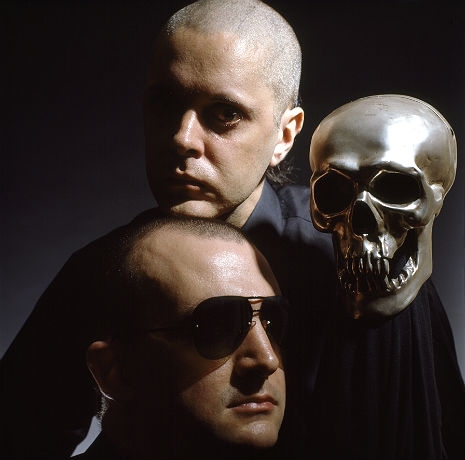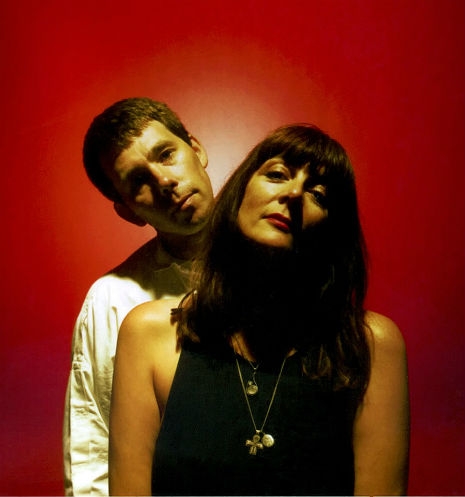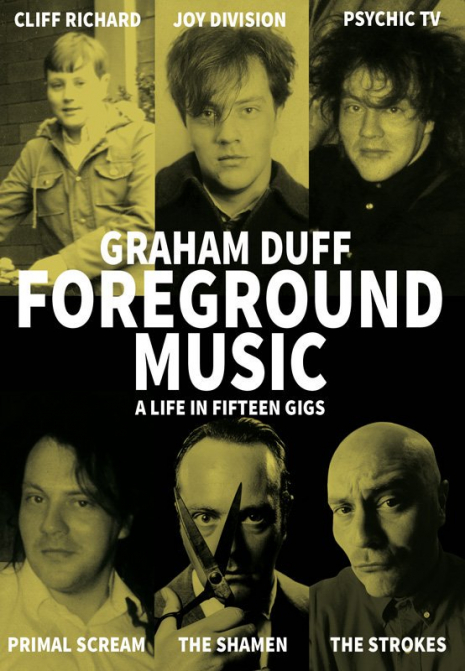
In Graham Duff’s charming new memoir, Foreground Music: A Life in 15 Gigs, the actor-writer looks back on some of his favorite concerts and discusses what was going on during those times in his life. Duff writes about seeing Cliff Richard, Joy Division, Psychic TV, Primal Scream, the Strokes, the Specials, the Velvet Underground reunion, the Fall, and his favorite, Wire.
In this excerpt, Graham goes to see Throbbing Gristle’s concert at London’s Heaven discotheque on Fathers Day, Sunday June 21, 2009. At that time he was 45 years old.
My good friend Malcolm Boyle and I enter the venue. Heaven usually operates as a gay nightclub. But, due to its location and superb sound system, from time to time it’s also used as a rock venue. Today, bizarrely, Throbbing Gristle have already done a matinee show here. This helps me keep my expectations of tonight’s show in check. Is it possible the group could channel the amount of energy and passion required for the creation of their music twice in one day? Unlikely I think.
We buy drinks from the bar and survey the capacity crowd. I spot my friend Andrew Lahman and the Pop Group’s Mark Stewart. Throbbing Gristle attract a far more eclectic audience than one might expect. There are men in leathers, both biker style and fetish style. There are women in their 30s with crimson lipstick and long, straight 60s hairstyles. There are Japanese boys and girls in their early 20s who are probably art students. There are people in their 40s who look like they’ve just returned from raving in Ibiza. There are numerous morbidly overweight men in their 50s, wearing combat fatigues adorned with TG and PTV patches. Hell, there’s even a substantial gaggle of goths.
There are also quite a few straight-looking people here tonight. And I guess, I’m probably now in that camp too. Long gone are the days where I might daub the word “Resistance” on a T-shirt and wear that. Gone too are the days where I’d wear a long mac, even indoors. Now, I wear the clothes that I feel confident and comfortable in. In my brown linen suit and black cotton shirt, I suppose I look like a father on Father’s Day.
Suddenly, Throbbing Gristle begin to assemble on stage. No lighting change, nothing. All around us people are clapping, whistling and whooping. The sound of awe and respect. It’s only now, as the group are taking a few moments to sort out their equipment, I realize I have no idea what to expect from tonight’s performance. Will they play new material? Greatest ‘hits’? Cover versions? All of these are a possibility.
On the left hand side of the stage, stands Cosey Fanni Tutti - impossibly glam in her black diaphanous top, black glittery leggings and shiny candy apple red knee high latex boots, her snub nosed Hohner guitar around her neck. Centre stage is Genesis Breyer P-Orridge. Hair cut into a sharp blonde bob, s/he’s dressed in a set of very feminine pale pink clothes that are so tastefully styled, s/he could have almost stepped out of the pages of a Toast catalogue.
At the rear of the stage, occupying the space where you might expect a drum kit to be placed, there’s a table covered with a black cloth. Sleazy sits on the left hand side, laptop open in front of him. He wears a white and black gown with a fur trim, which looks part oriental priest and part Cruella de Vil. Opposite him, leaning over a battery of electronic devices, is Chris Carter, dressed in a white lab coat, looking like a concerned technician in a science fiction film. Their combination of outfits could be seen to symbolise the unlikely coalition at the heart of the group - the meeting of the beautiful, the grotesque, the camp, the mystical and the scientific.
“Oh it’s so wonderful to be back in London,” sneers Breyer P. Orridge, their tone dripping with insincerity. And yet this still elicits applause and cheers from certain sections of the audience. “Home of political corruption and asshole politicians. Don’t you just love this country? Where no one tells the truth.” It seems a surprisingly straightforward statement. Trite even. But then, just to put a bit of a spin on things, s/he adds “Gordon Brown, I want to suck your cock.” Hmmm. As I stand in the densely populated environs of Heaven, I wonder if Throbbing Gristle will still be able to disturb, confound and exhilarate.
Suddenly, all qualms are blown aside, as a deep primeval thud reverberates through the venue. I can feel it in my guts. Another enormous thud. And another. And another. This isn’t a rhythm. It’s a series of timed depth charges. It’s the kind of sound that seems designed to trigger my fight or flight instinct. Malcolm looks across at me beaming, yet somehow also looking concerned. Each thud is coated in a thick, sickly synthetic tone that increases the sense of deep dread. This is a surprising reinvention of the ironically titled ‘Very Friendly’, one of the group’s earliest compositions.
As the evenly spaced thuds continue to pound into the very foundations of the building, Cosey’s distorted guitar creates darts of noise that pierce the song’s corpus. Then Breyer P-Orridge begins to intone “It was just an ordinary day in Manchester, Ian Brady and Myra Hindley drinking German wine.” The narrative goes on to describe the hacking up of a corpse in the couple’s living room, as Eamonn Andrews blithely presents This Is Your Life on the television set. Blood splashes on the screen and runs down Andrews’ chin. This is music with a very strong, very sour flavor.
People sometimes ask why anyone would actively choose to listen to music that makes them feel unsettled or even scared. Although the question is a valid one, interestingly it’s a question that is rarely asked of cinema, or literature, or fine art. The paintings of Francis Bacon are unremittingly bleak and unsettling, yet there is no question over his genius or the validity of the work. Similarly the books of Stephen King, and the films of David Lynch contain huge swathes of material specifically designed to frighten and deeply disturb. Again we accept that they are masters of their craft. But it would seem that music, the most abstract of the arts, should expect to be judged by different criteria.
Despite the popular image of the group as purveyors of unleavened doom, they have so much more in their armory than provocation and matter of fact terror. Unlike many of the Industrial bands that followed in their wake, Throbbing Gristle always engaged with a genuine range of emotions and ideas. “United” is a sincere love song, “Exotica” is a piece of subtle drifting ambience, “Hot on The Heels of Love” smolders with dance floor sensuality and “AB/7A” exudes electro exhilaration and positivity.
However, in live performances, Throbbing Gristle do tend to lean more heavily towards the darker side of their work. And songs don’t come much darker than “Very Friendly.” After eight punishing minutes, the song closes in a tsunami of echoing vocals. There’s enthusiastic clapping, cheers and whistles from the packed audience. I feel relieved the song has finished, but exhilarated by the primal assault. “Well thank you. That was the first song we ever wrote, in 1975.” Says Breyer P-Orridge, before adding “It was a love song.”
Foreground Music: A Life in 15 Gigs is published by Strange Attractor Press on December 10th, 2019. Pre-order here.
See what was described above via this crowd shot video of Throbbing Gristle live at Heaven, June 21, 2009.











